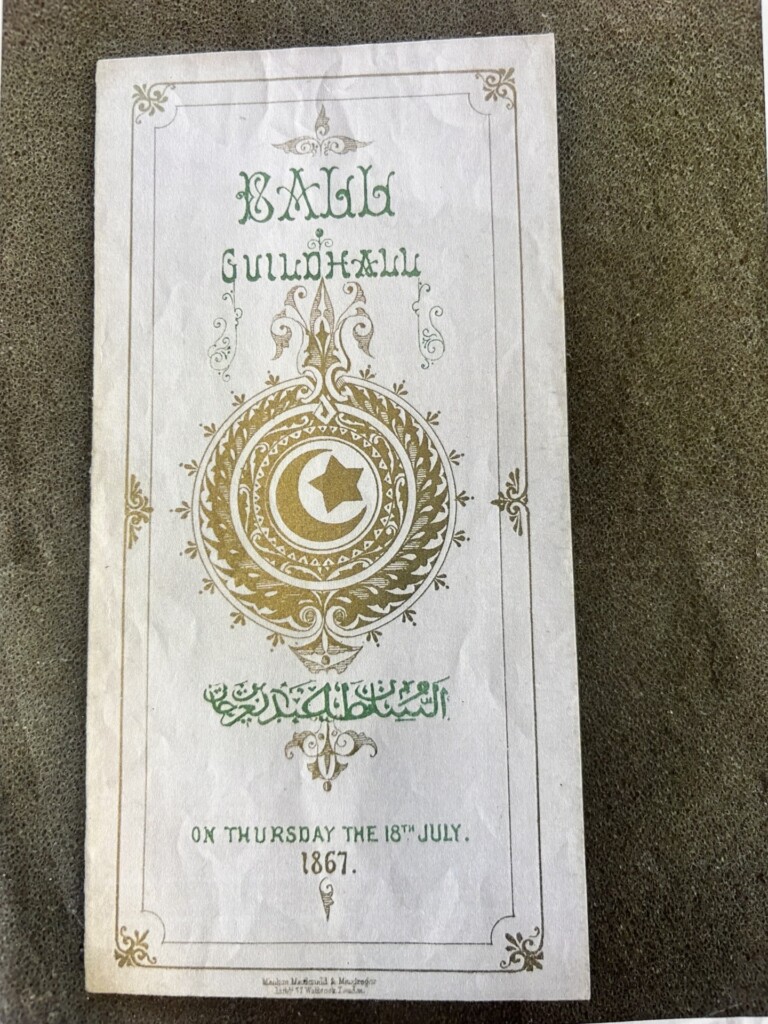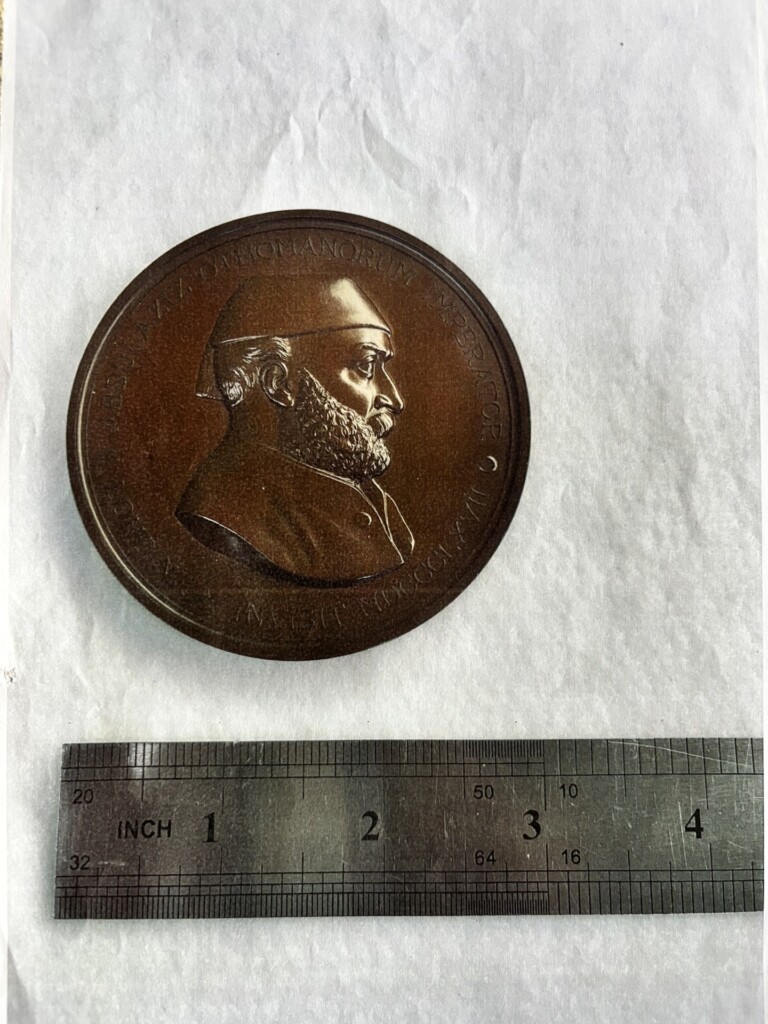
In the name of Allah, the Most Gracious, the Most Merciful. All praise is due to Him, and may His peace and blessings be upon His final Messenger, Muhammad.
Londoners may be interested to know that a variety of historical links to the Ottoman Empire are closer to home than they realise.
Perhaps more surprising still, is that many of these can be found in the small financial district at the heart of the British capital, known as the City of London.
BACKGROUND
- With the problem of Islamophobia persisting in some quarters in the UK, it is worth reminding ourselves of the fascinating Islamic past this country really has
- How fantastic is it, then, that many historical connections to the Ottoman Empire — a major Islamic powerhouse of its time — can be found on a walk through one of the British capital’s smallest localities?
- We never know whose footsteps we are retracing right here in the UK; could they even be those of a caliph?
- Plus, a valuable legacy of the transfer of scientific knowledge from the Ottomans to Britain may be sitting right under your nose!
The City — sometimes called the Square Mile — is distinct from the Big Smoke’s 32 boroughs. It has its own independent police force, is governed by the City Corporation, and headed by a Lord Mayor.
The locality is far less known, however, for its impressive Ottoman past. So says AbdulMaalik Tailor, an expert on Britain’s Muslim heritage and the UK’s first professionally qualified Muslim tour guide.
Knowing the past helps you control and shape your own narrative and that of your community. It can help us tackle Islamophobia, and feel confident in our identity as British Muslims.
It may come as a surprise to some, but a whole treasure trove of Ottoman and other Islamic history is waiting to be discovered right in the centre of London.”
AbdulMaalik, the founder of Halal Tourism Britain, offers walking tours around the City, showcasing sites and sharing stories of Islamic historical significance.

A sultan’s state visit
Many of these places and tales relate to the Ottomans.
One of these locations, Guildhall, which serves as the City of London’s centre of government, was even graced with the presence of a sultan — then the caliph of the world’s Muslims.

Sultan Abdülaziz (r.1861-76) is renowned for modernising the Ottoman Navy and developing his empire’s railway system.
When discussing the laying of railroads, he is even quoted as having said,
Just get it built; run it over my back, if you want.” [1]
What fewer people may know is, in July 1867, he also became the first and only sitting Ottoman ruler to set foot in the United Kingdom.
Intending to strengthen relations between his empire and Britain, Abdülaziz crossed the English Channel from France and landed in Dover, before boarding a train to Charing Cross Station.
Needless to say, his arrival in Britain caused quite a stir, with the Times reporting the day after,
Yesterday, for the first time in England’s history, the great chief of the Mussulman race, the representation of the long line of Caliphs and Sultans whose power, a little more than a century ago, was the dread of Western Europe, landed on our shores.” [2]
The Sultan was welcomed in a special ceremony at Guildhall. There he met with notable British politicians of the day, including the Prime Minister Lord Derby and the then leader of the Conservative Party in the House of Commons — and later Prime Minister — Benjamin Disraeli. [3]

The City Corporation struck a medal to commemorate the Caliph’s visit, marking the momentousness of the occasion.
The bronze memento showed the profile of the Sultan donning his fez on its front face. The reverse displayed two female figures — one representing London and, the other, the Ottoman Empire — greeting one another. The two figures are flanked by images of St Paul’s Cathedral and an Ottoman mosque. [4]

During his time in Britain, the Sultan also met the future King Edward VII, then the Prince of Wales, and was hosted for a banquet at Windsor Castle by Queen Victoria. The Queen also made Abdülaziz a Knight of the Garter, granting him the highest British honour a person can get.
These events, including those that took place in the City of London, are deeply significant for British Muslims today. A state visit from an Ottoman caliph is a strong reminder of the impressive — albeit lesser known — Islamic history that the United Kingdom has to offer.
Ottoman medicine reaches Britain
The Sultan’s attendance at Guildhall is not the only remarkable historical first to come about in the Square Mile as a result of diplomatic ties between Great Britain and the Ottoman Empire.
The site of another such event can be found by the Old Bailey, the Central Criminal Court of England and Wales. But, as AbdulMaalik explains, the real story is tied to another place that is no longer there, the once nearby Newgate Prison.
Around one hundred and fifty years before Abdülaziz arrived in London, a British couple set off in the opposite direction. Edward Wortley Montagu was appointed Britain’s ambassador to the Ottoman Government in 1716. Edward may have been the diplomat, but his wife Lady Mary also built valuable links between Britain and the Ottomans herself.
She had witnessed how the Ottomans treated their people against smallpox with inoculation, a practice that Sultan Abdülaziz’s brother and predecessor Abdülmecid later made mandatory for all subjects in 1840. [5] Even while she was still living in the Ottoman Empire, Lady Mary became a passionate advocate for bringing inoculation back to Britain. She had her son treated as well.
In 1717, she wrote to her friend back at home, saying,
I am patriot enough to take pains to bring this useful invention into fashion in England; and I should not fail to write to some of our doctors very particularly about it.” [6]
Having herself survived a fierce bout the year before her departure for Istanbul, and lost her brother to the disease, Lady Mary was no stranger to smallpox and the damage it could cause. After her return to Britain, she promoted the practice among the royal family.
But trials were necessary before the British royals would take up the treatment for themselves. Confident in the measure, Lady Mary had a group of medical professionals witness the inoculation of her daughter. Thereafter, further clinical trials took place in the City of London’s Newgate Prison, when a group of six prisoners who had been sentenced to death volunteered as “guinea pigs”.
Thankfully for the prisoners, they all survived and were pardoned for their crimes in exchange for their willingness to take part. With the trials successfully concluded, members of the royal family then began to be inoculated as well, decades before the British physician Edward Jenner tested his smallpox vaccine in 1796.
As AbdulMaalik explains,
We must not forget the wider significance of this event.
These early clinical trials that took place right here in London, are a valuable reminder that Islamic scientific achievements did not end when the Muslims ceased to rule in Spain in 1492, contrary to widespread belief in many Muslim and non-Muslim Western circles.”
How noteworthy then, that such an important moment in the history of British-Ottoman ties took place in a former prison by the Old Bailey, in the centre of the UK’s capital.
Ottoman women challenged British assumptions
While living in the Ottoman Empire, Lady Mary clearly admired her hosts!
She wrote, for instance, that the towering 16th-century Selimiye Mosque built by the famous court architect Mimar Sinan in the Turkish city of Edirne was “the noblest building I ever saw”. [7]
Lady Mary also learned some Turkish and made friends with Ottoman Muslim women. She was impressed by the right these women had to keep their own money irrespective of marital status, and concluded that they had more freedom than British women!
In her writings she challenged the negative stereotypes about Ottoman women then prevailing in Britain, explaining that,
Upon the whole, I look upon the Turkish women as the only free people in the Empire.” [8]
It is certainly worth looking into how many more Muslim connections like these the City (and indeed Britain more widely) really have. It could change how you see yourself for the better, and help you change the way others see you, inshāAllah.
Action points
-
Take AbdulMaalik’s City of London Tour and learn about fascinating Islamic connections and heritage.
-
Think about how we don't always have to look abroad to discover our past, we can find it here at home.
-
Look out for Islamic history in your own locality, you never know what you may find!
Source: Islam21c
Notes
[1] Carter Vaughn Findley, Turkey, Islam, Nationalism and Modernity, a History.
[2] https://www.cornucopia.net/magazine/articles/ode-to-a-sultan/
[4] http://www.historicalartmedals.com/Abdul%20Aziz_MCA%20April%202017%20e%20version%20(2).pdf
[5] Diana Darke, The Ottomans: A Cultural Legacy
[6] https://massivesci.com/articles/lady-mary-montagu-variolation-smallpox-our-science-hero
[7] Caroline Finkel, Osman’s Dream: The History of the Ottoman Empire 1300-1923







